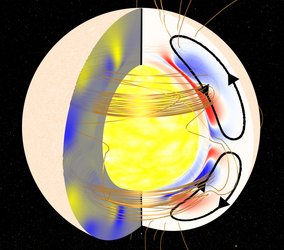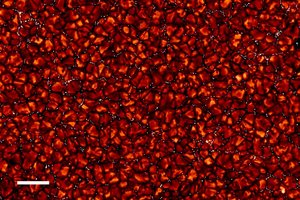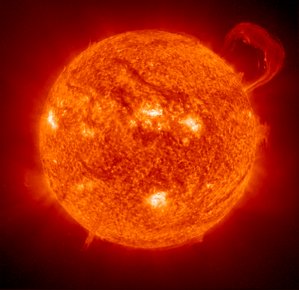
There are very substantial uncertainties in the modelling of stellar evolution, largely caused by insufficient understanding of hydrodynamical processes in stellar interiors, including convection, the evolution of rotation and the related mixing processes. This impedes our modelling of more advanced stages of stellar evolution. Within the next 5 to 10 years we expect a number of breakthroughs in stellar research with substantial contributions from SAC, and with significant impact on several research areas. A key aspect is an substantially improved understanding of the structural and chemical evolution of stars. This includes a comprehensive description of the evolution of our own Sun, from the early phases to the distant future, when the Sun will evolve to become a red giant star. The analysis of stellar evolution will be based on realistic theoretical models, including an understanding of the relevant hydrodynamical processes, which have been inspired by and tested against state-of the-art observations of stellar oscillations. This will provide a much improved basis for reliable determinations of stellar ages and other global parameters, as well as for the investigation of more advanced stages of stellar evolution, including supernova explosions, and for a detailed understanding of the chemical evolution of the Universe.

Stellar matter is under conditions too extreme to be reproduced in the laboratory. This has a very substantial effect on the thermodynamic state of the matter, the interaction between matter and radiation, the nuclear reactions and the diffusion and settling of elements in stars, all at a level that strongly affects stellar modelling. Within the next 5 to 10 years we expect to have sufficiently detailed asteroseismic data, especially from the SONG network, to allow a profound investigation of the microphysics over a range of stellar conditions, supplementing the on-going investigations based on helioseismic analysis of solar data. Together with planned collaboration with external partners on the physical basis, this is expected to yield unique information about the basic physical processes.

The magnetic field of the Sun and other Sun-like stars changes on time-scales from seconds to centuries. Some of the changes in the Sun can have dramatic consequences for us here on Earth. At SAC we take a truly interdisciplinary approach at studying these changes and their consequences. We thus have close collaboration with the Department of Geoscience on using cosmogenic isotopes to study past solar activity and running climate models to help us understand how changes in the Sun affect the climate.
Explore core research activities in-depth and read more about the scientific work, results and group members here

Recent observations are showing a bewildering variety of planetary systems, the properties and evolution of which are far from understood. With the first detections of truly Earth-mass and Earth-size planets, attention will turn to the question of habitability, in terms of stellar environment and atmospheric properties. Not only do the atmospheric properties have a significant impact on the habitability of the planetary body, but organisms inhabiting a planet may shape the composition of the atmosphere and leave the fingerprint of persisting life forms. Within the next 5 to 10 years we expect to characterize the basic statistical properties of planets in the Galaxy and improve our understanding of the conditions required for life, thus delimiting and refining the so-called habitable zones around stars. We expect to have studied a number of planetary systems in detail, determining the physical properties of selected planets and planetary atmospheres. With a refined understanding of stellar wind and magnetic fields, we can put exoplanet atmosphere evolution and the presence and lifetime of biosignature gases into context.
At the astrobiology node at Aarhus University you can find more information about the specific research.

One of the most fundamental problems in astrophysics today is to understand the formation and evolution of galaxies, including our own. The first step to reconstruct the history of the Milky Way is by using models of galactic evolution, which are simplified descriptions of what we believe were the key physical processes at play during the formation and evolution of the Galaxy. In order to properly constrain these models and understand our galactic past, their predictions need to be compared with the properties of stellar populations in different regions of the Milky Way.
With this purpose, we are investigating Stars In the Milky way with Bayesian statistics and Asteroseismology (www.isimba.dk) with the aim of determining accurate masses, radii, temperatures, metallicities, distances and ages of stars in different fields of our Galaxy. These results are providing a new benchmark to calibrate models of galactic evolution in different regions of the Milky Way and revealing the main physical processes that have shaped our Galaxy into what we see today.